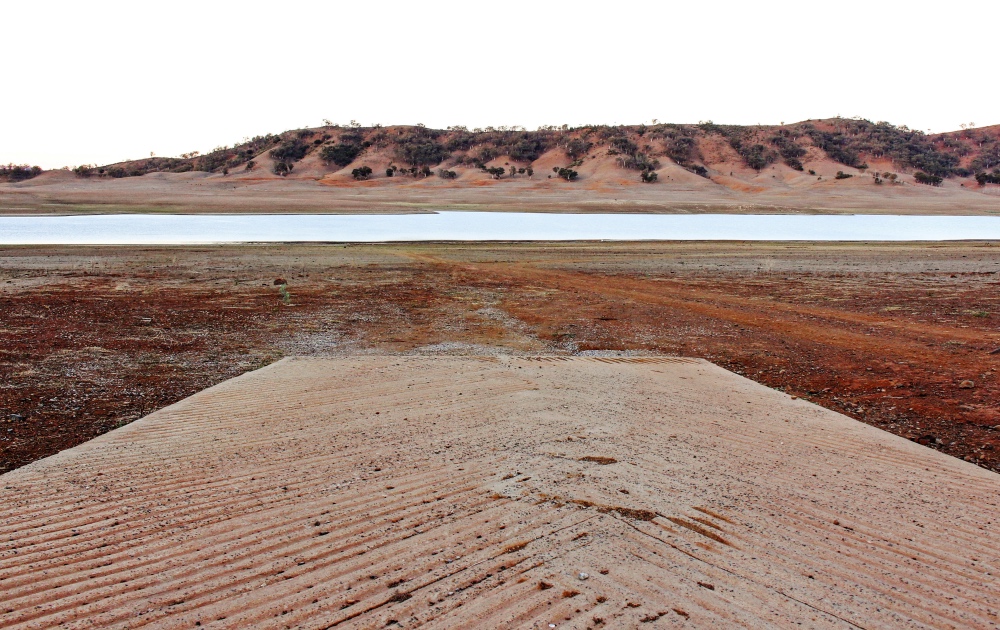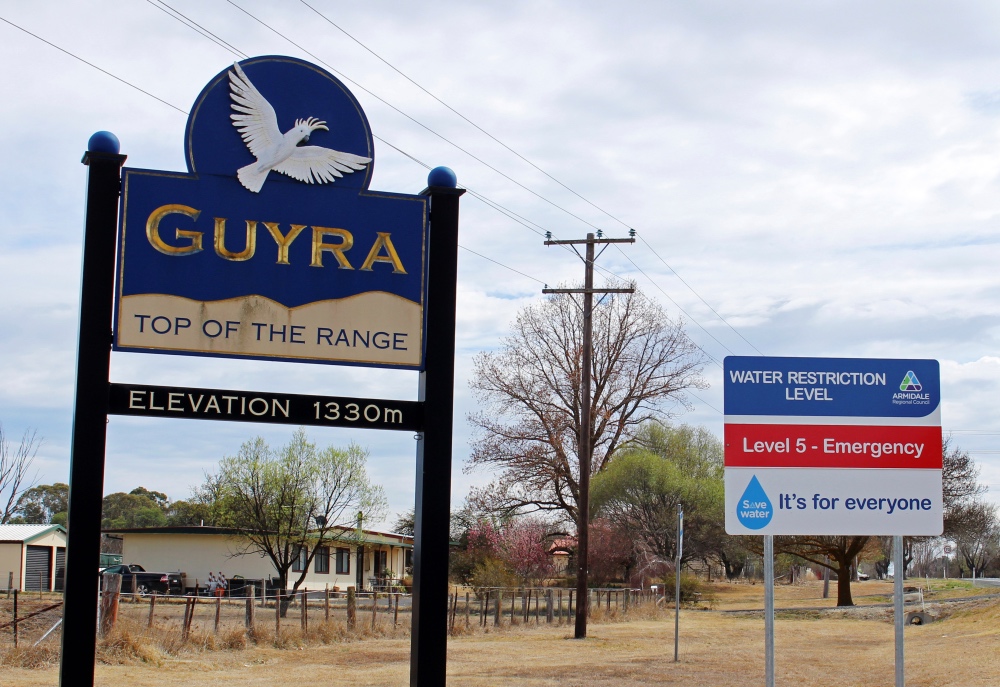Guyra, Australia
Reuters
The little town of Guyra in eastern Australia lies next to a freshwater lagoon just half a day’s drive from Sydney, but its drinking water is due to run dry in 400 days’ time.
The local authorities have been trucking in fresh water, built a pipeline to a local dam and will soon start drilling in the hope of finding new supplies. For Mayor Simon Murray, the biggest worry is that Guyra is not alone.

A boat ramp leads to the drought-affected Split Rock Dam near Tamworth in rural Australia, on 23rd September, 2019. PICTURE: Reuters/Jonathan Barrett
“A lot of towns are forecast to run out at the same time – and then where do you get the water from?” he said, referring to an area that is home to some 180,000 people.
It is part of a much bigger problem in a country unused to widespread financial hardship; Australia has enjoyed growth for a generation yet livelihoods are now at risk from drought worsened by climate change, a predicament more familiar to developing countries.
AUSTRALIA PLEDGES $A100 MILLION MORE IN AID TO DROUGHT-STRICKEN FARMERS
Sydney
Reuters
Australia will set aside an additional A$100 million to support drought-stricken farmers as continued dry weather threatens business for many growers, Prime Minister Scott Morrison said on Friday.
Australia’s east coast will swelter for at least three more months and the country will experience hotter-than-normal conditions, putting the chance of exceeding average temperatures at 80 per cent over the period, its weather bureau has said.
The forecast is a blow for the rural sector given the east coast accounts for about a third of its wheat output, the country’s most lucrative agricultural product.
Australia is among the world’s top 10 exporters of the grain, typically contributing about two per cent to GDP.
In addition to setting aside more funds to prop up the industry, Morrison said his government will also lower eligibility standards so more farmers can get access to the previously committed $A7 billion in aid.
“This isn’t welfare. This is really just helping people make sure that they can maintain viability,” Morrison told reporters in Dalby, 208 kilometres west of Brisbane – the state capital of Queensland.
“These are important assets for our country, our farming assets, lands they can remain productive so they can stay on the land is important to Australia.”
Morrison said $A33 million, from the $A100 million, will be set aside to provide cash-strapped farmers, contractors and families with emergency payments of up to $A3,000 each.
The government estimates there are about 24,000 farmers who would qualify for the payments.
Another $A50 million will be allocated to expand a scheme that pays drought-stricken farmers income support every fortnight.
Morrison said the remaining capital will be used to expand services such as mental health counselling.
– COLIN PACKHAM
Parts of northern and inland New South Wales, along with southern Queensland, have been in drought since 2016, severely depleting river and dam levels.
Australia’s Bureau of Meteorology says the drought is being driven, in part, by warmer sea-surface temperatures impacting rainfall patterns. Air temperatures have also warmed over the past century, increasing the ferocity of droughts and fires.
In New South Wales, the government has provided some local councils with estimates of an end-date to water supplies in the worst-case scenario which change along with likely demand and supply.
Dubbed “day zero” by locals, they are focussing some minds in a wealthy country where plentiful coal resources weigh against pressure for action on climate change.
“Day zero – it’s a war-time phrase,” sheep and cattle farmer Richard Daugherty told Reuters on his property, located near the small town of Uralla, 200 kilometres inland from Australia’s eastern coastline.
But links between climate change and extreme weather events have become a political football in Australia.
The conservative government has argued stronger environmental action would cripple its economy, pitting itself against its Pacific island neighbours which are particularly susceptible to warmer temperatures and rising seas.
It came under fire from British naturalist Sir David Attenborough for supporting new coal mines shortly after school children around the globe protested against government inaction on climate change and world leaders met in New York for a climate summit.
Prime Minister Scott Morrison did not attend the climate summit. He told the UN General Assembly that critics overlooked Australia’s work on curbing emissions and that the country would meet its Paris emissions reduction goals.
He has also pledged $A100 million in extra funding to support drought-striken farmers (see breakout).

A sign indicating the water restriction level as a result of a drought stands in Guyra in rural Australia, on 25th September. PICTURE: Reuters/Jonathan Barrett
Guyra, population 2,000, lies in a region known as New England, where European livestock stations were established almost 200 years ago on land resembling the colonial power’s green countryside.
Together with the North-West region, it produced $A2.6 billion in agricultural production in 2017-18, according to commodity forecaster ABARES.
Murray, who also oversees the bigger regional centre of Armidale, said he first realised the scale of the problem when he noticed entire hillsides of hardy eucalyptuses dying.
Some of the region’s biggest towns, which include Dubbo, with 40,000 people, Armidale, 25,000, and Tamworth, 62,000, are forecast to run out of drinking water mid-to-late next year, according to the latest government projections.
“This is going to another level – it’s almost unimaginable,” Murray said.
Most councils, including Armidale and Dubbo, are trying to extend the deadline by drilling into the earth to tap underground reservoirs in the hope they can access water suitable for drinking.
Even Sydney’s biggest dam, Warragamba, has dropped to 50 per cent, after almost being at capacity less than three years ago.
The central bank has warned the drought is weighing on Australia’s economic growth. The value of farm production is forecast to decline by five per cent to $A59 billion in 2019–20, according to ABARES.
There is already a steep daily cost to farmers, towns and governments that are paying to truck-in water that usually drops freely from the sky.
Farmers in the Armidale area told Reuters they were now paying well in excess of $A250 to bring in 10,000 litres of drinking-quality water, which is almost double the cost of pre-drought prices.
Australia’s east coast is forecast to continue sweltering for at least three more months, the country’s weather bureau said.
Locals are making do. Joe George, 57, used to wash his fleet of nine school buses once a week, but now collects whatever rain falls onto his depot’s rusty roof for a monthly wash to meet his contractual obligation to provide clean vehicles.
“Worst drought I’ve ever seen,” he said at the bus depot in Guyra. “We had a bad one in the early 80s but even that was nothing like this.”






